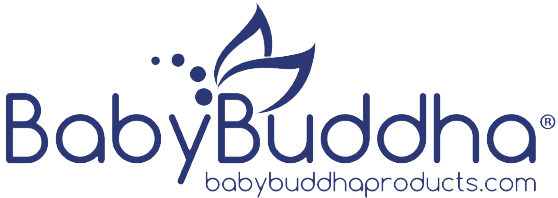California Law on Breast Pumping at Work

To all the moms out there, we know how challenging it can be to balance your career with breastfeeding. It’s a moment when you’re figuring out how to be both a working mom and a breastfeeding mom, and it can feel like a lot.
But here’s the truth: You’re not asking for anything extra. You’re simply asking for what the law already protects.
In California, you have clear, protected rights when it comes to breastfeeding at work. This isn’t about making things harder for your employer; it’s about making sure both you and your baby are supported as you continue to rock both work and motherhood.
80% of women who worked during pregnancy have gone back to work before their baby’s first birthday. That’s why having the right support in place, like lactation breaks, is so important.
In this blog, we’ll walk you through everything you need to know about your right to pump, the breaks you’re entitled to, and how your workplace should accommodate you.
TL;DR
- You’re legally allowed to pump at work under California Labor Code Sections 1030–1033.
- Your employer must provide a clean, private space (not a bathroom) with a chair, outlet, and nearby access.
- You can take as many pumping breaks as needed based on your baby’s feeding schedule.
- Breaks during regular paid time are paid; extra pumping time can be unpaid, but cannot be denied.
- It’s illegal for your employer to punish you for asking to pump or filing a complaint.
Know Your Legal Right to Breast Pumping at Work in California
You’re already juggling so much, and the last thing you should worry about is whether you’ll have the time and space to pump at work.
In California, you have the legal right to take breaks to express breast milk while you’re at work. This right is protected under the California Labor Code Sections 1030–1033, which ensures that employers must provide you with the space and time to pump.
What makes California’s laws even better is that they cover all employees, no matter the age of your baby, and they apply whether you’re a full-time worker or a part-timer.
What Your Employer Must Provide
Here’s a quick list of what your employer is required to provide:
- A private, non-bathroom space: It should be a clean, private area so you can pump without feeling rushed or exposed.
- Convenience: The lactation space should be near your workspace, making it easy to step away when needed.
- Basic amenities: A comfortable chair, a flat surface for your pump, an electrical outlet, and, if possible, running water and refrigeration for your milk and equipment.
Once you have a space to pump, the next question is often when. Let’s walk through how pumping breaks can fit into your day, in a way that supports both you and your baby.
Understanding Your Pumping Breaks at Work
Your body works on its own schedule, and the law makes space for that. Let’s take a closer look at how break time is meant to work, so you can plan your day with less stress and more confidence.
What Does Reasonable Break Time Really Mean?
Reasonable means exactly what it sounds like: the time you need to pump without having to squeeze it into a rigid schedule. How much time you need depends on your circumstances and how often your baby needs to feed.
Most moms take two to three pumping breaks during an eight-hour shift, though that number may be higher or lower depending on your supply, your baby’s age, and your personal schedule.
The law doesn’t specify exact times, but it’s about giving you what you need without feeling like you’re compromising either your work or your baby’s health.
Will You Be Paid for Pumping Breaks?
If your pumping break happens during your regular paid break, then yes, you should be paid. If you need extra time beyond your usual breaks, your employer isn’t required to pay you for that additional time, but they also cannot penalize you for needing it.
If you’re an hourly employee, your employer may ask you to clock out during those extra pumping breaks, but that shouldn’t affect your overall pay. If you’re salaried, your pay should remain the same.
The goal is to support your ability to breastfeed without making you feel rushed, stressed, or like you’re falling behind at work.
What to Do If You’re Not Given Time or Space to Pump
If your employer is not providing you with the time or space you need to pump, don’t worry; you do have options.
Speak Up with Confidence
Start by having a calm conversation with HR or your manager. It doesn’t need to be a confrontation. Sometimes, simply pointing out that you’re legally entitled to lactation breaks is enough to get things moving in the right direction.
You deserve this time, and most employers will understand once it’s clearly communicated.
What If That Doesn’t Work?
If your employer doesn’t provide the required lactation space or break time, they may be fined $100 per day, per violation under California Labor Code Section 1033.
California law, along with federal protections like the PUMP Act, gives you the right to hold your employer accountable. These rules are in place to protect your health, your baby’s well-being, and your peace of mind.
You can file a complaint with either:
Both of these agencies handle claims related to lactation accommodations. The U.S. Department of Labor (DOL) is another option if your rights are being violated.
It’s also important to know that you’re protected from retaliation. The law prohibits your employer from taking any negative action against you for asserting your rights to pumping breaks or for filing a complaint.
You’re simply asking for the support you deserve as a working mom.
Tips to Make Pumping at Work a Little Easier
Pumping at work doesn’t have to be complicated. With a few simple adjustments, you can make the process easier and less stressful. Here are some tips that many working moms have found helpful:
- Pack your pumping bag the night before: Get everything ready in advance, your pump, accessories, extra bottles, wipes, and a spare shirt. This way, you won’t have to think twice when it’s time to pump.
- Use a hands-free bra: A hands-free bra allows you to pump and get other tasks done at the same time, making the most of your time.
- Wear easy-access clothing: Choose tops or dresses that make it easy to nurse without wasting time trying to get undressed. Quick access means more time for other things.
- Keep a spare shirt at work: Always have an extra shirt on hand, just in case you need to change it after a pumping session.
- Connect with other moms: If you have coworkers who are also breastfeeding, don’t hesitate to ask for tips and suggestions. A little support from someone who’s been there can go a long way in reminding you that you’re not alone.
These simple tips can help make pumping at work feel more manageable. With a little preparation, it becomes just another part of your day, and you can keep focusing on both your baby and your job.
Final Words
As a working mom, you’re doing something truly amazing by balancing both your career and breastfeeding. We know it’s not always easy, but we hope you now feel empowered and confident knowing that California law is on your side.
You’re entitled to the time and space to pump at work, and you don’t need to feel guilty about it. This is your right, and it’s important to stand up for what you need.
Remember, you’re not alone in this. There are resources, fellow moms, and support networks ready to help you every step of the way.
FAQs
Q1. Can my employer require a doctor’s note or other medical documentation for lactation breaks?
A: No, your employer cannot require a doctor’s note to give you lactation breaks. The law doesn’t require any medical documentation to access your right to break time and a private space to pump.
Q2. Can my employer treat me differently because I request or take lactation breaks?
A: Absolutely not. The law protects you from discrimination or retaliation for taking lactation breaks. Your employer cannot treat you unfairly or make negative changes to your job.
Q3. Do I have to clock out while pumping at work?
A: Whether or not you need to clock out largely depends on your employer’s policies and the nature of your work. Some employers may require you to clock out during pumping breaks, while others may allow you to remain on the clock. It’s always best to check your company’s specific guidelines.
Q4. How many breaks do I get for pumping at work?
A: Most people need 2-3 breaks during an 8-hour workday, depending on how often they normally pump or feed and their body’s needs. These breaks should be enough for you to express milk comfortably without feeling rushed.
Q5. Can I breastfeed at work instead of pumping?
A: If your employer allows it, you can breastfeed your baby at work instead of pumping, which can even be more efficient. It’s all about what works best for you and your baby, so feel free to discuss this option with your employer.










